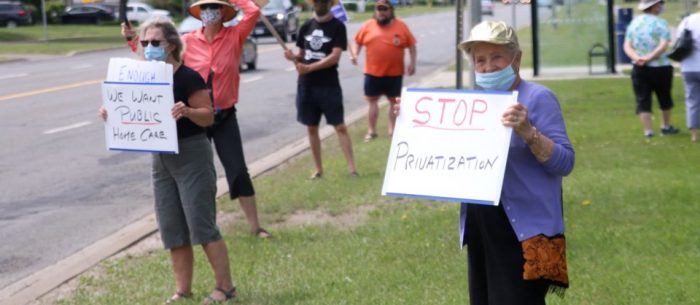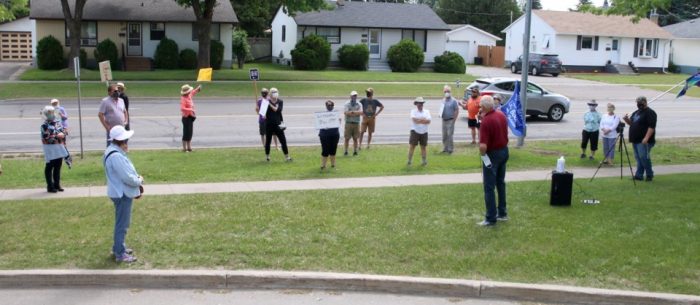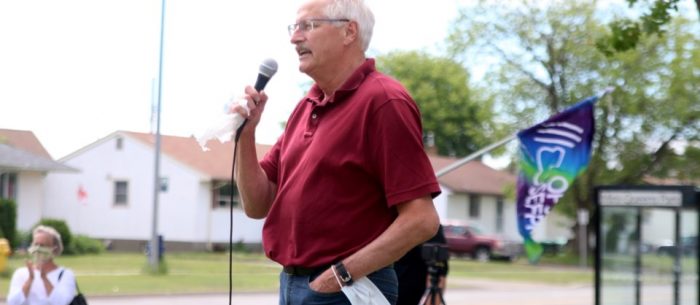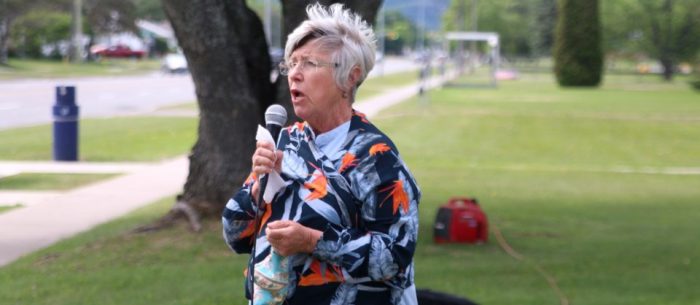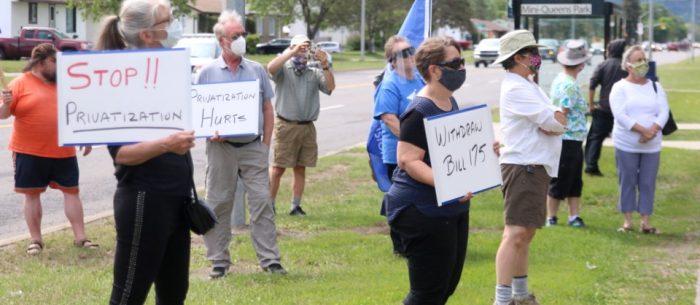‘Staff crisis remains critical’: Health-care unions about coronavirus working conditions
Posted: May 9, 2020
(May 8, 2020)
By: Marta Marychuk, Brampton Guardian
Employees from hospitals and long-term care homes represented by the Canadian Union of Public Employees held a workplace action Wednesday, May 6, to protest the lack of protection and call on Ontario’s premier for help.
The peaceful protest, which also included home-care nurses, personal support workers, cleaners and administrative staff, was organized by CUPE along with the Ontario Council of Hospital Unions (OCHU).
The number of Ontario health-care workers infected with COVID-19 rose to 2,892 on May 5, up from 2,016 on April 27, an increase of 43.5 per cent, said Michael Hurley, president of OCHU.
So far, Hurley said, five health-care workers in the province have died — the same number of health-care workers who died in the COVID-19 outbreak in China.
“That number continues to rise at an alarming rate,” said Hurley, during a news conference. “We want the spread of the virus stopped.”
Hurley said China “toughened up” protocols for personal protective equipment (PPE) and took immediate steps to use N95 masks when health officials realized health-care workers were at getting sick in high numbers. China and other countries also “ramped up” testing, which is how the virus was contained.
“It’s sad what’s happening in long-term care,” said CUPE Ontario secretary-treasurer Candace Rennick.
Rennick said a number of measures are needed to protect health-care workers, including N95 masks to stop the spread of COVID-19 droplets; increasing staffing levels at long-term care homes; and, paying workers proper compensation.
“People in long-term care are undervalued significantly,” said Hurley.
Pam Hayer, 46, has been a personal support worker since 2003. In 2004, she started working at Tall Pines Long Term Care Centre in Brampton, which is operated by the Region of Peel.
“I love it,” she said. “Every day is a new day.”
Hayer spends eight hours a day taking care of the residents, bathing and helping to feed them. Because she spends so much time with the seniors, Hayer says she knows more about the residents than their families.
Many of the staff in long-term care homes were working at three or four locations because they are employed on a part-time basis, said Hayer.
In mid-April, the province passed an emergency order that limits long-term care staff to work at one facility.
“All of a sudden we were in demand,” she said. But many employees are still part-time and Hayer says the are working 60-hour weeks. The Region of Peel is bringing in temporary part-time staff until August.
But CUPE officials say the full-time to part-time staff ratio is about one to two.
On April 2, one of staff tested positive for COVID-19, said Hayer, and residents are quarantined in their rooms. Eating is one of the few pleasures the residents can enjoy now that they are isolation.
The staff are now working with full PPE, including masks, gowns and a face shield. Hayer says there is no issue with PPE. “The administration is so good,” she said.
Some families visit through windows or FaceTime. To help keep the residents’ spirits up, Hayer said staff sing songs and take small dance breaks.
Hayer recalled helping with the lunch trays when a female resident started to cry as she watched news coverage on COVID-10. The woman was afraid she was going to die from the virus. “It was heartbreaking to see her cry.”
Hayer comforted the woman by talking to her about something else. A co-worker had brought in some homemade banana bread, which they shared with the distraught woman. “We take life for granted,” she said.
“You have to be (positive),” said Hayer. “If you look at the negative, that will break you down.”
There have not been any deaths at Tall Pines as of May 6. There has been one staff case of COVID-19 and one resident case.
Not all long-term care and retirement homes are that fortunate.
On April 23, the Ontario Health Coalition (OHC) released a 70-page report that shows 3,783 people have been infected with COVID-19 in health-care facilities.
“PPE is better than it was, but it’s not quite there,” said Natalie Mehra, OHC executive director.
Staff at long-term care homes are supposed to have surgical grade PPE, including RNs and RPNs, said Mehra.
For other staff, there is a risk assessment, said Mehra. For staff that are unionized, and the unions are stepping in, it’s better. But the process is complaint-driven.
While there have been some improvements, such as increased COVID-19 testing in some areas, Mehra said measures have been slow and continue to be inadequate, particularly in long-term care and other congregate living and care settings.
“The staff crisis remains critical,” Mehra said.
Click here for original article


